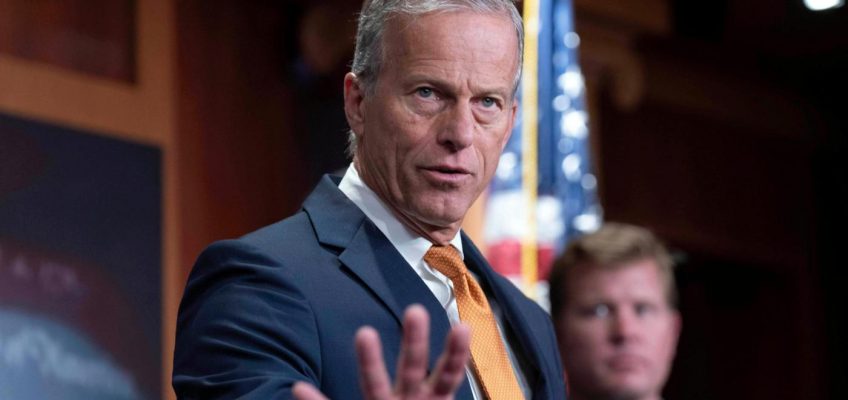Vikings vs. Steelers (+1½)
The NFL North co-leaders begin their two-week European adventure in Dublin against Aaron Rodgers and the Steelers. Irish football fans are very similar to their American counterparts in that they share a common nausea when the Pittsburgh quarterback opens his mouth.
Pick: Vikings by 3
Aaron Rodgers #8 of the Pittsburgh Steelers is sacked by Milton Williams #97 of the New England Patriots during the first half at Gillette Stadium on Sept. 21, 2025 in Foxborough, Massachusetts. (Photo by Jaiden Tripi/Getty Images)
Bengals at Broncos (-7½)
The Bengals suffered their worst loss ever last Sunday, falling by 38 points to the Vikings. Sports historians believe the debacle may have been the most disgraceful thing ever endured by Cincinnati fans that didn’t involve Pete Rose.
Pick: Broncos by 3
Ivan Pace Jr. #0 of the Minnesota Vikings tackles Jake Browning #6 of the Cincinnati Bengals during the first half at U.S. Bank Stadium on Sept. 21, 2025 in Minneapolis, Minnesota. (Photo by Adam Bettcher/Getty Images)
Packers at Cowboys (+6½)
It will be Micah Parsons Day in JerryWorld as the all-pro edge rusher returns just weeks after Jerry Jones traded him for scraps. Green Bay mavens are so excited that they immediately forgot all about last Sunday’s abomination in Cleveland.
Pick: Packers by 11
Micah Parsons #1 of the Green Bay Packers in action against the Washington Commanders at Lambeau Field on Sept. 11, 2025 in Green Bay, Wisconsin. (Photo by Michael Reaves/Getty Images)
Eagles at Buccaneers (+3½)
Tampa Bay improved to 3-0 last Sunday wearing its 50th anniversary throwbacks with the creamsicle-faced Buccaneer on their helmet. The logo is quite dated, as it was used in those days where having an orange face was not necessarily a sign of low IQ.
Pick: Buccaneers by 3
Mike Evans #13 and Baker Mayfield #6 of the Tampa Bay Buccaneers celebrate after a touchdown during the second quarter against the New York Jets at Raymond James Stadium on Sept. 21, 2025 in Tampa, Florida. (Photo by Julio Aguilar/Getty Images)
Ravens at Chiefs (+2½)
Baltimore’s Derrick Henry threw a helmet-slamming fit after another key fumble of his that led to another Ravens loss. Normally, if you want to see grown adults throwing tantrums like toddlers, you’d have to watch the House of Representatives on C-SPAN.
Pick: Ravens by 3
Baltimore’s Derrick Henry shows a high level of disenchantment on the sidelines after his critical fumble Monday night against Detroit. (Screen grab from YouTube)
Chargers at Giants (+5½)
New York lost to Kansas City on Monday night, dropping the Giants’ record to 2-20 in evening games over the past six seasons. So they’re switching to rookie Jaxson Dart at quarterback this week, because Russell Wilson now sucks both day and night.
Pick: Chargers by 11
Russell Wilson #3 of the New York Giants sacked by Chris Jones #95 of the Kansas City Chiefs during the third quarter at MetLife Stadium on Sept. 21, 2025 in East Rutherford, New Jersey. (Photo by Elsa/Getty Images)
Commanders at Falcons (+2½)
Atlanta reportedly is still asking for an exorbitant price to trade former Vikings QB Kirk Cousins. But so far the best offer they’ve gotten, from an unnamed team, is an exchange of the veteran quarterback for a 1974 Chevy Vega.
Pick: Commanders by 3
Kirk Cousins #18 of the Atlanta Falcons participates in warmups prior to the NFL Preseason 2025 game against the Dallas Cowboys at AT&T Stadium on Aug. 22, 2025 in Arlington, Texas. (Photo by Stacy Revere/Getty Images)
Jets at Dolphins (-2½)
Two winless teams battling to avoid the AFC East basement are slated to stink up ESPN’s premium Monday night time slot. This game is such a dog that Disney is considering taking the game broadcast off the air and replacing it with Jimmy Kimmel re-runs.
Pick: Dolphins by 3
Miami Dolphins quarterback Tua Tagovailoa, right, sits on the bench during the second half of an NFL football game against the Buffalo Bills in Orchard Park, N.Y., Thursday, Sept. 18, 2025. (AP Photo/Adrian Kraus)
Colts at Rams (-3½)
The Rams, and many bettors, lost big time when their try for a game-winning field goal turned into a pointspread-flipping, blocked-kick touchdown by the Eagles. That result will mean more cash for seedy gambling sites to spend on tedious Kevin Hart-LeBron James commercials.
Pick: Rams by 7
Jordan Davis #90 of the Philadelphia Eagles returns a blocked field goal for a touchdown against the Los Angeles Rams during the fourth quarter at Lincoln Financial Field on Sept. 21, 2025 in Philadelphia, Pennsylvania. (Photo by Mitchell Leff/Getty Images)
Saints at Bills (-15½)
Winless New Orleans broke out its alternate white helmets in Week 3 for its loss in Seattle. The blank shade matches perfectly the white flags the Saints waved when crafting their 2025 roster.
Pick: Bills by 21
Tyler Shough #6 of the New Orleans Saints in action against the Seattle Seahawks at Lumen Field on Sept. 21, 2025 in Seattle, Washington. (Photo by Steph Chambers/Getty Images)
Jaguars at 49ers (-3½)
San Francisco’s Nick Bosa suffered a season-ending knee injury, a severe blow to the 49ers’ defense. He received many online condolences, including one from President Trump, urging Bosa to avoid taking Tylenol and “tough it out.”
Pick: 49ers by 7
San Francisco 49ers defensive end Nick Bosa (97) lies down on the sideline during an NFL football game against the Arizona Cardinals, Sunday, Sept. 21, 2025, in Santa Clara, Calif. (AP Photo/Scot Tucker)
Other games
Browns at Lions (-8½)
Pick: Lions by 7
Titans at Texans (-6½)
Pick: Texans by 3
Panthers at Patriots (-4½)
Pick: Panthers by 3
Bears at Raiders (-1½)
Pick: Raiders by 7
Record
Andre Szmyt #25 of the Cleveland Browns celebrates with teammates after kicking the game winning field goal against the Green Bay Packers during the fourth quarter at Huntington Bank Field on Sept. 21, 2025 in Cleveland, Ohio. (Photo by Gregory Shamus/Getty Images)
Last week
11-5 straight up
11-5 vs. spread
Season
34-14 straight up (.708)
30-18 vs. spread (.625)
All-time (2003-25)
3853-2115 straight up (.646)
2940-2897-145 vs spread (.504)
You can hear Kevin Cusick on Thursdays on Bob Sansevere’s “BS Show” podcast on iTunes. You can follow Kevin on X — @theloopnow. He can be reached at kcusick@pioneerpress.com.
The Loop Fantasy Football Report Week 4: Time to panic over struggling standouts?
The Loop Fantasy Football Update Week 3: Last-minute moves
The Loop NFL Picks: Week 3
The Loop Fantasy Football Update Week 2: Last-minute moves
The Loop NFL Picks: Week 2




